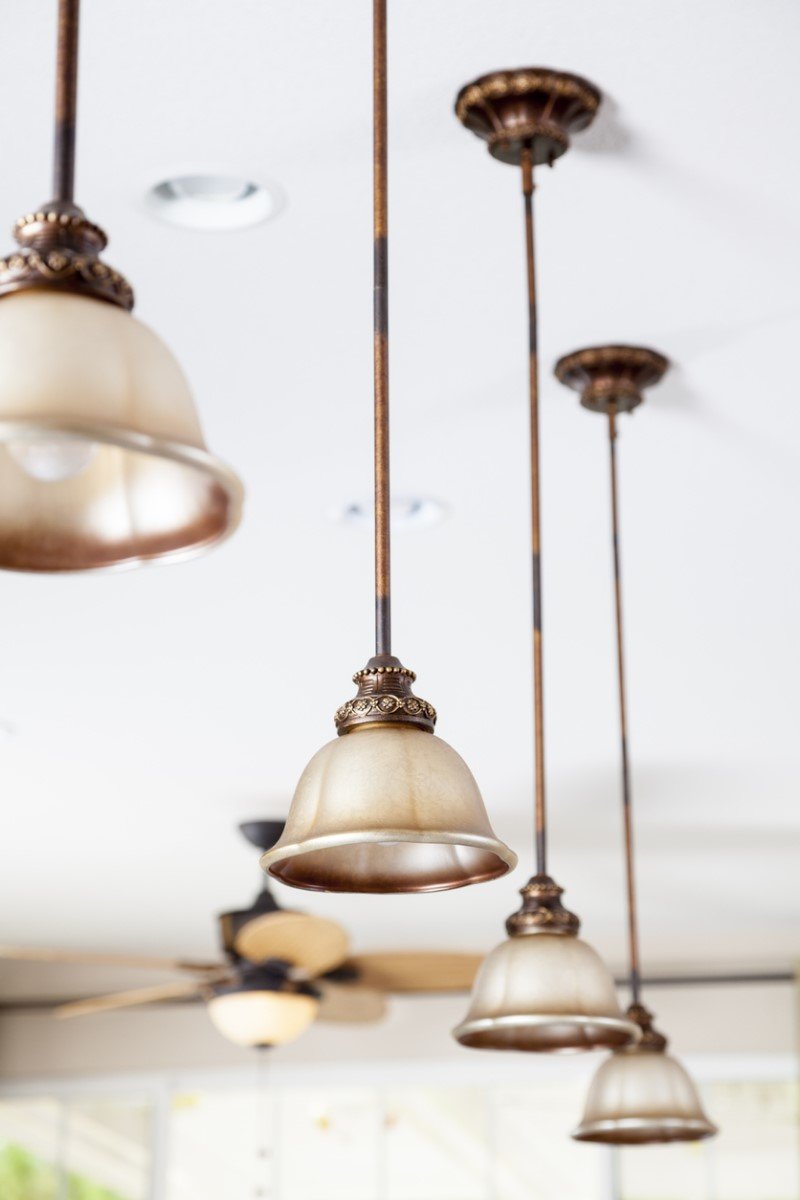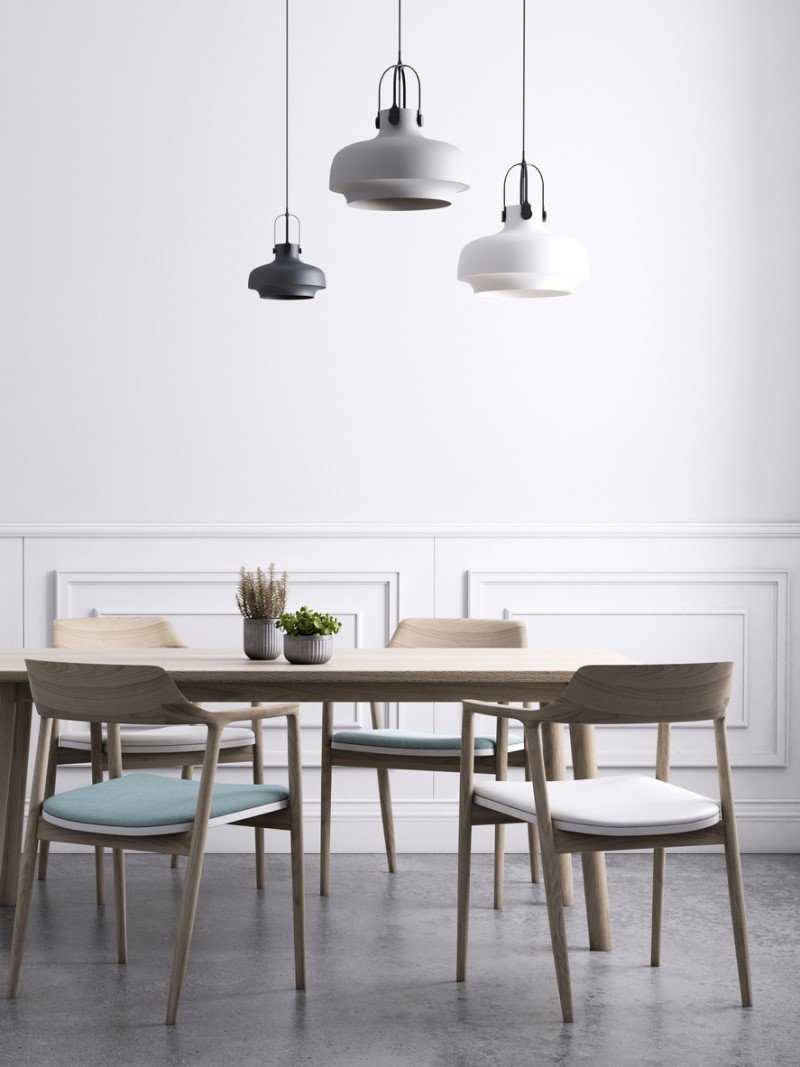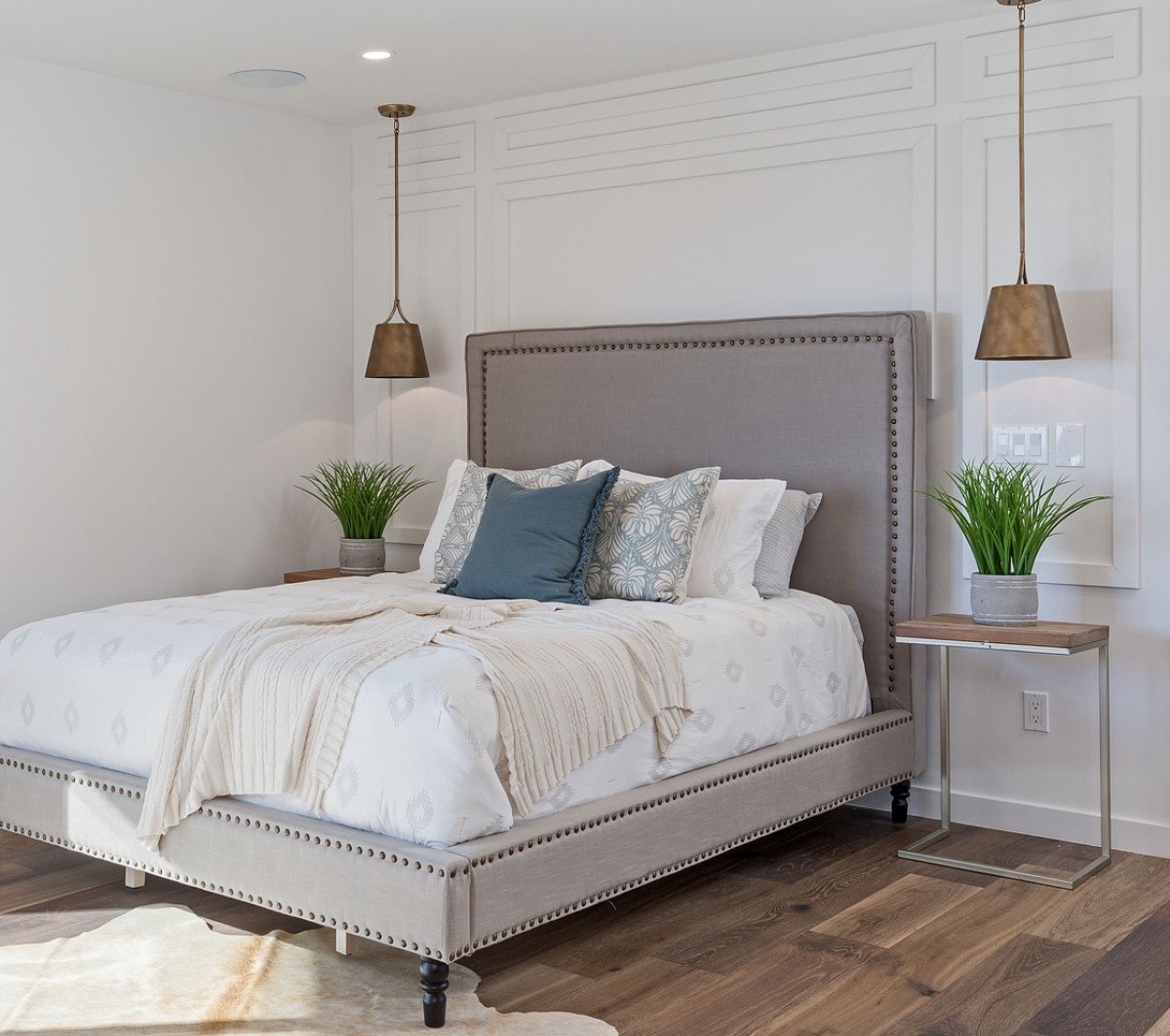We may earn revenue from the products available on this page and participate in affiliate programs. Learn More ›
Jean Nayar is the author of Detailing Light (The Whitney Library of Design), a book on lighting designed by the country’s most notable architects and lighting designers.
Of all the various forms of light fixtures, pendants may offer the greatest opportunity to make a statement and introduce a pop of personality to a room. Though as functional as any other type of light fixture in that they provide either overall ambient light or directed “task” lighting, pendant fixtures come in a wide range of styles, shapes, materials, and colors that can be combined to form a dramatic sculptural focal point in a room.
Installing pendant lighting isn’t difficult, particularly if you’re just replacing a fixture. After turning off power to the room—and confirming that is indeed off—install the new mounting hardware, wire the fixture to the electrical box, and fasten the fixture before finally attaching the canopy. Even if you’re averse to hard-wiring, plug-in pendant lights are available; simply hang from a hook on the ceiling or wall and plug into an outlet.
Whether suspended over a kitchen sink, in a row above a countertop, or in the foyer, pendant fixtures look and function at their best when employed using a few aesthetic and practical rules of thumb. To guide you, we’ve answered the most frequently asked questions about pendant fixtures.
RELATED: 8 Common Lighting Mistakes Almost Everyone Makes
1. What should I look for in the design?
Before buying a pendant fixture, consider the context. The style of your home and your decor is the best starting point. Are your rooms modern and minimalist or warm and rustic? Is your home classic and traditional, playful and eclectic, rich and glamorous, or understated and simple? Opt for a fixture with materials and shapes that complement your style or that provide an interesting counterpoint to other furnishings.
- For a rustic space, you might opt for a schoolhouse-style pendant with antique pewter or iron hardware.
- In a modern space, a sleek linear chrome or brushed nickel fixture would be more suitable.
- An eclectic room is ideal for a whimsical fixture with a colorful glass shade.
- For most other interior looks, a fabric-covered rectangular or drum-shaped fixtures make great transitional lighting elements.
RELATED: 16 Brilliant Lighting Ideas You Can DIY on a Dime
Next, think about where the fixture will be placed. Pendants over dining tables offer the greatest potential for a dramatic statement. Hanging them in a group? Then a subtle, compact fixture might be more appropriate.
When choosing multiple fixtures to place over a bar or countertop, consider what is commonly known as “The Rule of Three,” which calls for three identical fixtures to establish a rhythm and sense of balance (patterns of odd-numbered elements being more pleasing to the human eye). And if most of your furniture is boxy in shape, consider choosing a round or cylindrical fixture as a counterpoint, or vice versa.

2. What size and scale should I choose?
Pendant fixtures look best when their size and scale is in harmony with the size and scale of the room and its furnishings. A massive dining room can handle a massive pendant or chandelier, while a compact breakfast nook needs a smaller-scale fixture in keeping with its size. And a band of pendants running the length of a kitchen bar or countertop should be at least 10 inches smaller in diameter than the width of the counter to leave headroom for anyone seated beneath.
In general, however, bigger is better with pendants if your goal is to make a powerful visual statement. Diminutive pendants lose their impact among other room elements. So, long as you follow the headroom rule above, opt for the biggest pendant that will work in your context. Just be careful not to produce a barrier effect between one side of the counter or table and the other.
Another approach for choosing the size of a pendant or chandelier in a foyer is to simply add the room’s dimensions together and change the total from feet to inches. For example, if your foyer is 11 feet by 14 feet, add 11 plus 14 to get 25. The proper pendant or chandelier size chandelier would be 25 inches in diameter.
3. What is the ideal height for a pendant?
There are two approaches to positioning pendants properly over a dining table.
- Hang the bottom rim of the pendant 60 to 66 inches from the floor.
- Suspend it so that the bottom measures about 30 inches above the counter or table surface. The same goes for placement above a bar or raised counter. (This may vary depending on the height of the inhabitants or the function of the table or counter surface–a dining table frequently used as a desk, for example, could benefit from pendant lighting positioned about 16 inches from the surface.)
Either approach will yield the same result by providing ample illumination on the table surface while shielding the glare of the light sources from the eyes of diners around the table.
Elsewhere in the house, you might find the right proportions by lengthening the chain based on your ceiling height. If your ceilings are more than 8 feet high, increase the height of the chandelier or pendant 3 inches for each additional foot of ceiling height. For a pendant in a foyer, suspend the fixture so that its bottom hangs about 7 feet from the floor.

4. When should I use multiple pendants in a row?
Clusters of pendant lighting are great options for very long dining tables, kitchen bars, and counters. The key to using a collection of pendants in any space is finding balance among all of the other competing elements in the room. In some cases, such as over a short, wide counter in a small room, it may be worthwhile to break the “Rule of Three” and instead use one or two larger pendants to call attention to the bar while keeping the space from looking too busy. When placing pendants in a row, the space between the bulbs or light sources (not the edges of the fixture themselves) should be about 30 inches apart.
5. Should I use a dimmer?
It’s always worthwhile to install a dimmer. Not only does it allow you to control the mood and amount of light shed on any given surface or space, but it’s also a great way to limit energy consumption and lower your energy bills.

